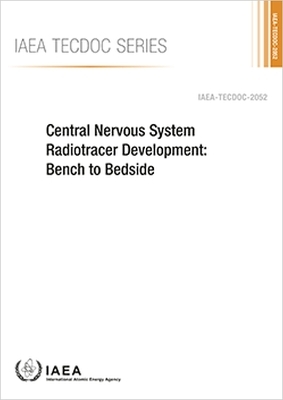
Central Nervous System Radiotracer Development: Bench to Bedside
Seiten
2024
IAEA (Verlag)
978-92-0-116624-1 (ISBN)
IAEA (Verlag)
978-92-0-116624-1 (ISBN)
An overview of central nervous system (CNS) radiotracer development, which discusses different aspects and stages of development. The information provided in the document will be useful to researchers, students and professionals engaged in the development and deployment of CNS radiotracers for clinical, research or drug development applications.
This publication provides an overview of central nervous system (CNS) radiotracer development, discussing different aspects and stages of development. Non-invasive neuroimaging with radiotracers can provide functional information at the cellular level and contributes substantially to understanding the complex mechanisms of the functioning and pathophysiological processes in the human brain and is useful in certain diseases for patient stratification, treatment response monitoring and as an aided technique for drug development. The success of the development of clinically significant radiotracers depends on many factors such as the selected biological target, specificity and affinity of the radio ligand, pharmacokinetics of radiotracer and others. The information provided in the document will be useful to researchers, students and professionals engaged in the development and deployment of CNS radiotracers for clinical, research or drug development applications.
This publication provides an overview of central nervous system (CNS) radiotracer development, discussing different aspects and stages of development. Non-invasive neuroimaging with radiotracers can provide functional information at the cellular level and contributes substantially to understanding the complex mechanisms of the functioning and pathophysiological processes in the human brain and is useful in certain diseases for patient stratification, treatment response monitoring and as an aided technique for drug development. The success of the development of clinically significant radiotracers depends on many factors such as the selected biological target, specificity and affinity of the radio ligand, pharmacokinetics of radiotracer and others. The information provided in the document will be useful to researchers, students and professionals engaged in the development and deployment of CNS radiotracers for clinical, research or drug development applications.
| Erscheinungsdatum | 30.05.2024 |
|---|---|
| Reihe/Serie | IAEA TECDOC Series ; 2052 |
| Zusatzinfo | 44 illustrations |
| Verlagsort | Vienna |
| Sprache | englisch |
| Maße | 210 x 297 mm |
| Gewicht | 300 g |
| Themenwelt | Medizinische Fachgebiete ► Radiologie / Bildgebende Verfahren ► Nuklearmedizin |
| Naturwissenschaften ► Biologie ► Humanbiologie | |
| Naturwissenschaften ► Biologie ► Zoologie | |
| ISBN-10 | 92-0-116624-9 / 9201166249 |
| ISBN-13 | 978-92-0-116624-1 / 9789201166241 |
| Zustand | Neuware |
| Haben Sie eine Frage zum Produkt? |
Mehr entdecken
aus dem Bereich
aus dem Bereich
Buch | Softcover (2022)
Lehmanns Media (Verlag)
CHF 55,90
Lehrbuch für Breast Care Nurses und Fachpersonen in der Onkologie
Buch | Hardcover (2020)
Hogrefe (Verlag)
CHF 63,00


